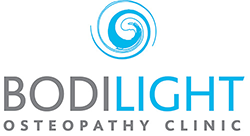If you have suffered from shin splints, just the mention of them may be making you wince right now, I know it’s bringing back some bad memories for me!
Medial Tibial Stress Syndrome (Shin Splints) is pain felt in the front lower legs (on the inner border of the shin) between the knee and the ankle. This occurs during and after exercising.
What causes Shin Splints?
Shin splints are caused by overuse of lower leg muscles that pull on the tibia (shin bone) and cause inflammation. This overuse can be due to unaccustomed activity or overloading the lower limb muscles with excessive activity. Poor footwear or foot mechanics can also bring it on and it’s a common injury in runners and in stop-start sports like squash and tennis. Those who run on hard surfaces are particularly affected.
When the muscles of the calf and the shin are tight they transmit more force than they can absorb. This results in the bone suffering great stress as the muscles pull on their attachment which can cause microscopic fractures of the bone and immense pain.
When your calf muscles are very tight, the tension pulls the foot rapidly, downwards during running. As the shin muscles oppose the calf muscles they must work hard to slow down this movement and become over-worked and pull on the bone at the front and lead to pain.
A lack of effective stretching is one reason for muscle tension, however, there may be other biomechanical reasons for the muscles becoming tense. These may include;
Stiffness in the ankle or foot joints:
This causes the muscles to work harder as they must overcome the stiffness to produce normal foot movement resulting in increased muscle tension in the shin and calf area.
Sprained Ankles:
These affect the stability of the ankle joint and the shin and calf muscles then need to be used more to re-stabilise the joint increasing the tension in these muscles.
Over pronation (rolling inwards) of the foot:
This is common if you have flat feet and causes the shin and calf muscles to work together to support the instep, over loading them and leading to tension.
Differences in leg length or torsion of the pelvis:
This causes more weight to be placed on one leg and the muscles to develop more on that side leading to the tension.
What are the Symptoms:
- Initially you may feel discomfort which improves with activity
- It often starts off as a dull pain but over time increase and can become excruciating.
- Tightness and tenderness to touch of the shin area close to the bone.
- If left untreated the pain may be a constant ache.
- Circulation is otherwise healthy and there isn’t any muscle weakness, pins and needles or numbness in the legs.
One of the most important things to do when suffering from shin pain is to not ignore the pain or mask it with pain killers or creams in order to continue exercising.
It is important to diagnose shin splints from other causes of shin pain such as compartment syndrome or a stress facture in order to receive the correct treatment.
Treatment and management can include:
Preventing this muscle tension on the tibia is key to avoiding the onset of shin splints. Two weeks of “active rest” through swimming or rowing can be enough to allow the pain to subside but they are likely to reoccur if the tension in this area is not treated. Most patients with shin splints respond to soft tissue massage, stretching and regular icing. Arch Supports for your trainers (orthotics), joint mobilisation, ‘taping’ and dry needling can also help the problem. Seeing professional advice is key to finding the right treatment for you.
How Can a Bodilight Osteopath Help You with this condition?
We will conduct a detailed case assessment and perform an in-depth movement and orthopaedic assessment to diagnose your injury. If necessary, you may be required to undertake further assessment and imaging.
We will identify potential aggravating and maintaining factors for your injury or complaint and provide you with solutions to reduce this. This could simply mean a review of your activity levels, training programme, training environment and footwear.
Your Practitioner will provide hands on osteopathic manual therapy as well as stretching and taping where appropriate.
We will provide you with a stretching, mobility and strengthening program so that you can better manage your own condition and/or work on preventing it from recurring and to allow the injury to heal.
To find out more about these conditions and how you can better treat and manage these conditions, please call us on 01908 722 499 or book an appointment online to see one of our osteopaths.



